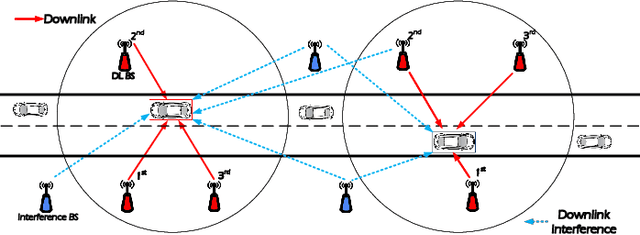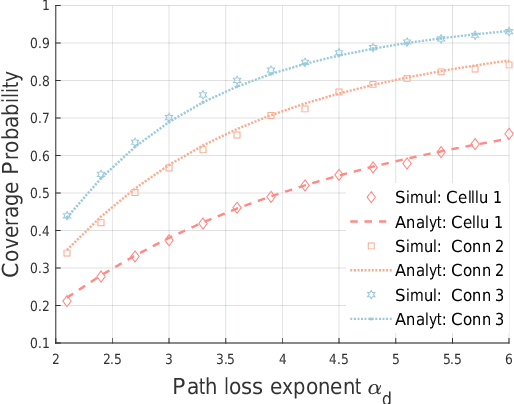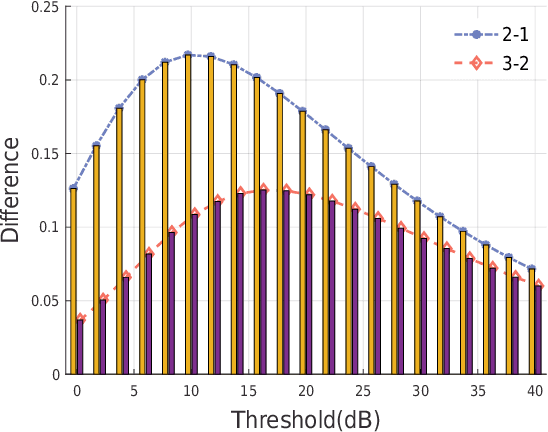Coverage Analysis of Downlink Transmission in Multi-Connectivity Cellular V2X Networks
Paper and Code
May 27, 2024



With the increasing of connected vehicles in the fifth-generation mobile communication networks (5G) and beyond 5G (B5G), ensuring the reliable and high-speed cellular vehicle-to-everything (C-V2X) communication has posed significant challenges due to the high mobility of vehicles. For improving the network performance and reliability, multi-connectivity technology has emerged as a crucial transmission mode for C-V2X in the 5G era. To this end, this paper proposes a framework for analyzing the performance of multi-connectivity in C-V2X downlink transmission, with a focus on the performance indicators of joint distance distribution and coverage probability. Specifically, we first derive the joint distance distribution of multi-connectivity. By leveraging the tools of stochastic geometry, we then obtain the analytical expressions of coverage probability based on the previous results for general multi-connectivity cases in C-V2X. Subsequently, we evaluate the effect of path loss exponent and downlink base station density on coverage probability based on the proposed analytical framework. Finally, extensive Monte Carlo simulations are conducted to validate the effectiveness of the proposed analytical framework and the simulation results reveal that multi-connectivity technology can significantly enhance the coverage probability in C-V2X.
 Add to Chrome
Add to Chrome Add to Firefox
Add to Firefox Add to Edge
Add to Edge